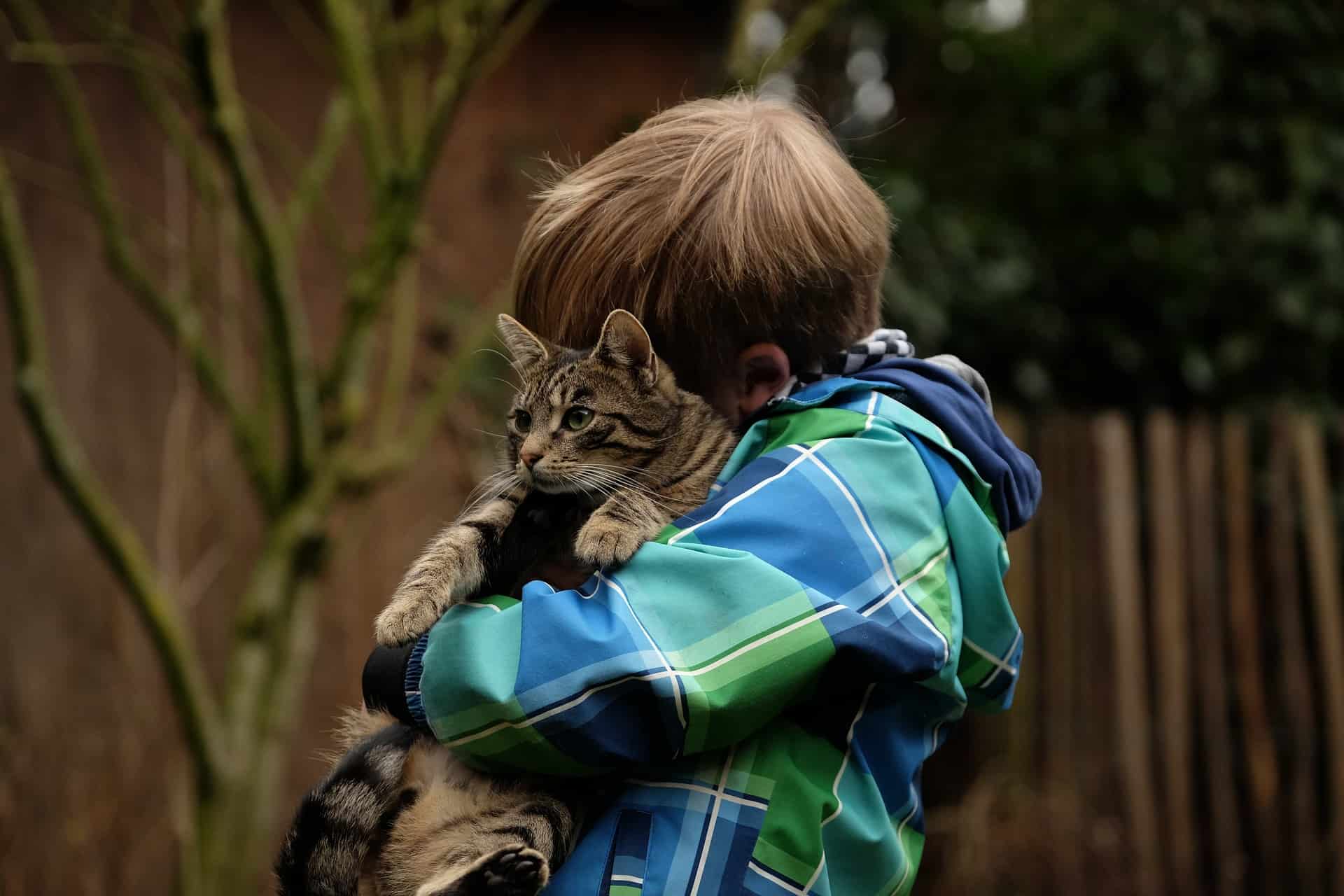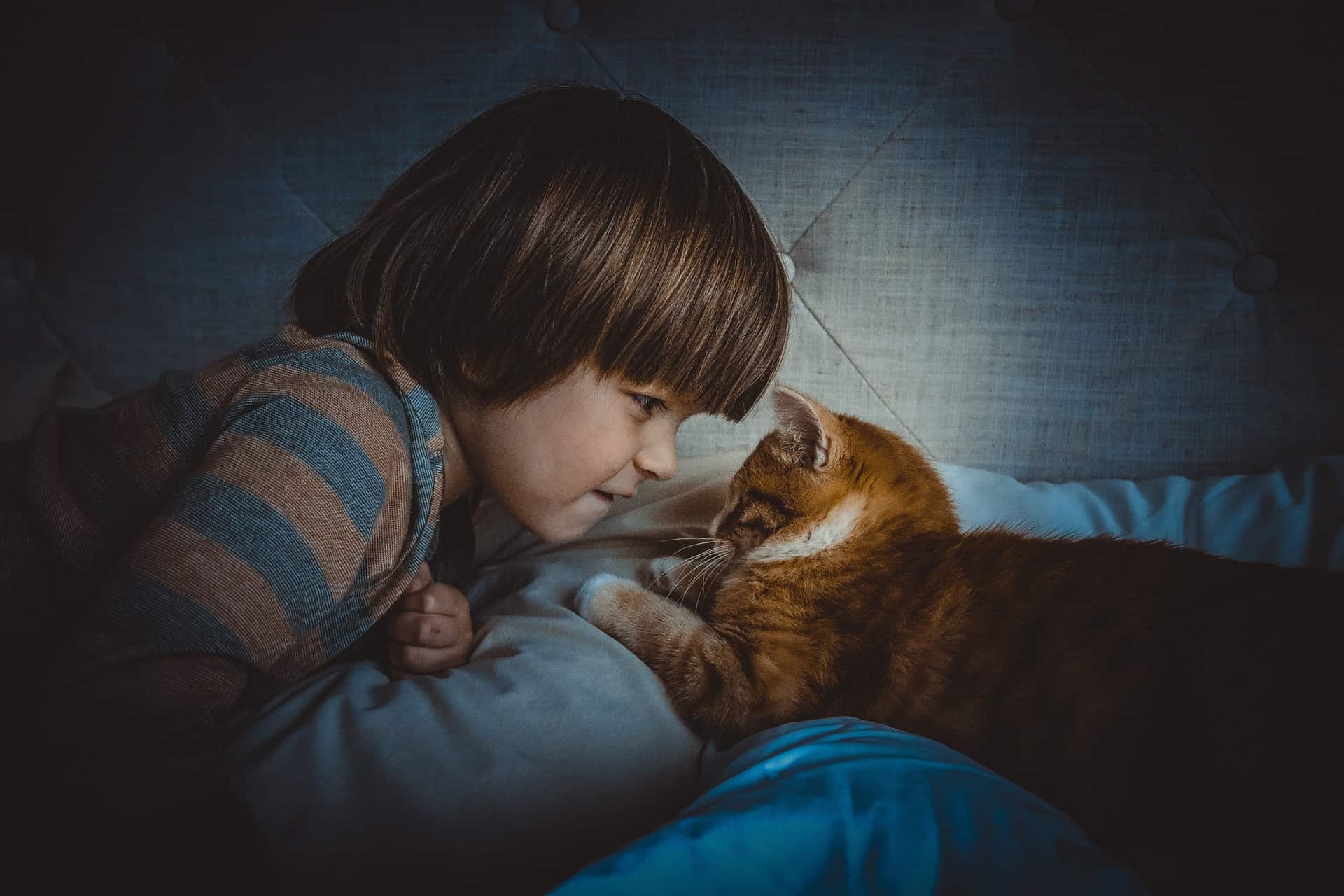
Few things bring joy into our lives — and our homes — like a happy child and a beloved pet. However, that joy can sometimes be delayed if the two get off on the wrong foot — or paw.
Bringing a new pet into your home takes time, patience and a bit of courage, especially if there are children in the mix. From puppies and toddlers to kittens and teens, a successful integration happens if you go about introducing them with intention and awareness. This guide shows you a few steps to consider so your furry friend becomes:
- Accustomed to your home and the house rules
- Buddies (or at least civil roommates) with your other pets
- Best friends with your young children
Introducing a new pet to the house

Presenting a new pet to your house can take hours, days or weeks — and possibly even longer if you’re adopting a puppy or a rescue animal that has experienced some trauma. It’s important that you stay calm and positive through the process, as animals can pick up on our moods and tend to feed off of them. When introducing a new dog or cat to the house, try to:
- Stock up on the right supplies, like a crate (if you’re crate training a dog), food and water bowls, treats for training, a collar and leash (for a dog), a litter box and litter (for a cat), toys, carpet cleaners and baby gates (to block off rooms you don’t want the pet to have access to).
- Escort the new pet as it explores each room of the house. Both dogs and cats will be concerned with smells; everything here is new and different, and they can learn a lot from scent.
- Show the cat where the litter box is kept so it knows where to go to the restroom right away.
- Put some blankets over furniture that you don’t want to be chewed or clawed if you’re bringing in a puppy or kitten. Be sure to keep closet doors closed and shoes picked up off of the floor. Everything is fair game to a puppy!
- Give your new dog or cat a temporary, separate living space that’s safe to stay in when you’re not around. Choose a room that has a view of the center of activity in your household (like the living room) so your new pet doesn’t feel isolated. Cats tend to like small spaces, so giving them a comfy box, dresser drawer or closet can help a new cat start to feel at ease in your home.
If accidents or messes do happen (and they will), remember that if you aren’t there to see it, punishing your animal does no good. They simply won’t make the connection no matter how much you rub their nose in it. Be calm and collected, and address the behavior when you see it occur.
Introducing a new pet to current pet residents

Whether you’ve noticed it or not, there is a hierarchy in your home. Someone (probably you) is the alpha, and the rest — cats, dogs and kids — are all part of the pack. When you bring in a new animal, you disrupt that hierarchy, even if only for a few days.
Your pets will try to get to know each other in a natural, organic way, but that can sometimes come with aggression. As the decision-maker for your pack, it’s up to you to introduce everyone in a way that keeps the peace and creates a warm, hospitable home for your new furry family member. You can try to:
- Let your new pet get to know its new home without the others around. Put existing pets in a separate room to give your new pet a chance to comfortably explore its surroundings.
- Be present and in control when your pets do meet. Step in at the first sign of aggressive behavior, and be sure that dogs do not chase or corner cats — even if tails are wagging.
- Avoid forcing them together, but give them time to come around. Being timid or unsure around a new animal is natural, so let them all adjust at their own pace.

- Praise and reward every time your crew does something good with each other, no matter how small or simple. This will get them to think of each other as bearers of love and affection.
- Avoid leaving them together without supervision until you are confident they will interact politely and safely.
- Keep separate food and water bowls, maybe even in separate spaces. For new cats, you may even want to offer a separate litter box until you’re certain conflict won’t occur over food and bathrooms. This is a good rule of thumb for toys, too.
- Create a safe place for your cats, a place where a dog simply can’t reach. If possible, try to give your cats individual spaces in several rooms. Don’t over think it — they won’t need much. Even the top of a bookshelf or a dresser will be a good spot.
- Introduce a cat to a dog, or a smaller animal to a larger one, by putting the dog in a crate or behind a gate and letting the cat come check out the dog in its own time. Do not hold the cat during the first few introductions. A frightened or nervous animal may scratch, bite or struggle.
Introducing a new pet to a child

Your family may be so excited to adopt this pet that they come rushing in, arms open with love. However, to a dog or cat unsure of their new environment, this can be terrifying, and a fearful animal is one that might act unpredictably. It’s just as important that you teach your children, especially little ones at the toddling age, love, respect, and self-control around a new pet. When introducing new pets to your kids, be sure to:
- Make sure the kids aren’t offering sticky, sweet hands when first petting a dog — the pooch may mistake it for food, which could potentially lead to a nip or bite. Try to make sure their clothes are also free of food stains so the dog doesn’t jump up to get a taste.
- Have two adults around during the introduction, one to focus on the dog and the other to focus on the children.
- Make introductions one at a time so the new cat or dog doesn’t feel overwhelmed or bombarded.
- Use “time out” to separate a dog from a child when they aren’t practicing good manners. When the dog comes back into the room, have the child invite them with petting, play or a treat.
- Keep the children from making sudden, quick or erratic movements around a new dog or cat.
- Teach your kids that animals are not toys, and their space needs to be respected. Show them pictures of dog behaviors, like relaxed ears, bared teeth or tucked tails, so they understand how to read the way a dog feels.

Watch for signs of stress, like decreased appetite, constant hiding or aggressive behavior. And remember, just because things start out OK doesn’t mean you shouldn’t remain vigilant for a while. Animals — like humans — can get on each other’s nerves, so you’ll find you may need to step in months after a new pet comes home. Be patient and flexible, and you’ll soon find everyone has enough space and room for a happy, healthy life.

 United States
United States Canada
Canada